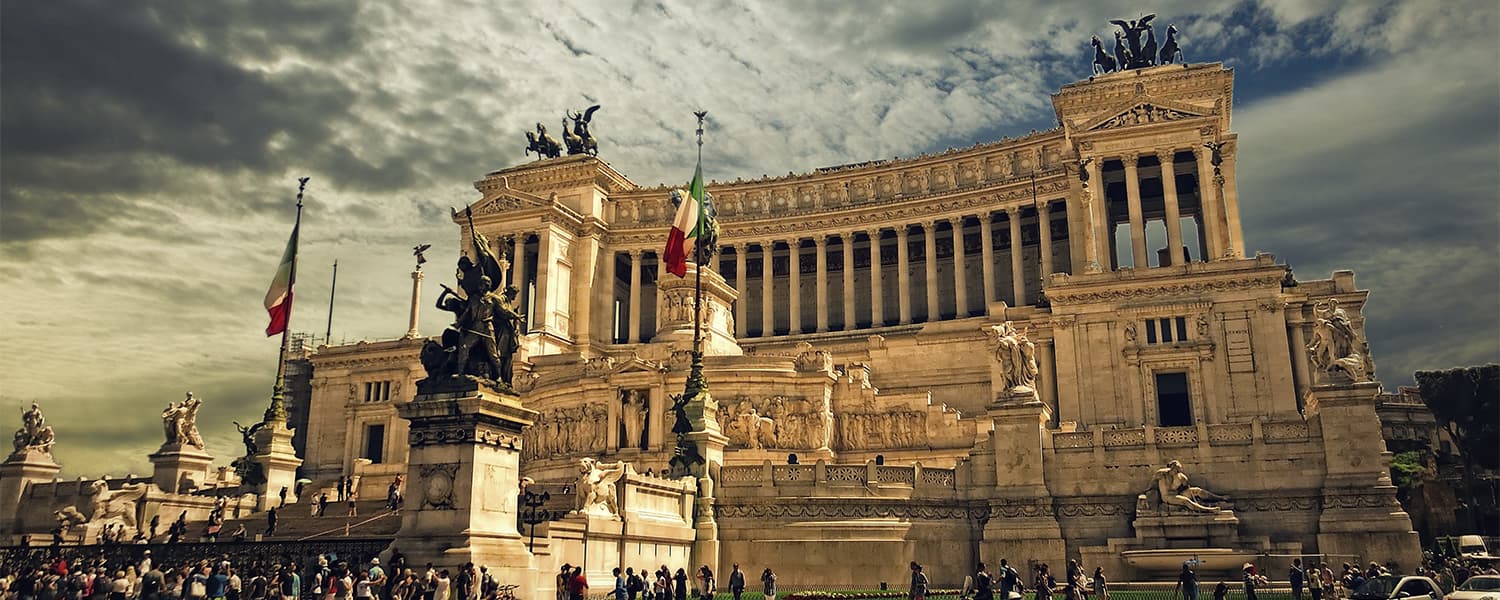Rome

Rome is the capital of Italy, the Eternal City, one of the oldest cities in the world and the ancient capital of the Roman Empire. It is one of those cities that you just can’t help but visit at least once in your life.
Rome is located on the west of the central part of the so-called “Italian boot” – the Apennine Peninsula, near the place where the Tiber river flows into the Tyrrhenian Sea. This river divides the city into two parts. The historic center of Rome stands on seven hills: Aventine, Capitol, Caelius, Palatine, Quirinal, Viminal, and Esquilinus, which range in height from 13 to 139 meters above sea level.
Rome is home to two independent state entities – the city-state of the Vatican City, the religious heart of Christian Europe for many centuries, and the dwarf enclave state, the Order of Malta.
The “city on seven hills and ruler of the whole earth,” as the ancient poet called Rome, is the birthplace of the Latin language, which was widely used by the masses in the ancient era and has survived in medicine until today. The laws of the Roman Empire served as the basis for modern Western law.
Today Rome is one of the most visited cities in the world due to the great number of historical and architectural monuments of different epochs. Its center (within the walls of Urban VIII) is a real open-air museum, it is fully included in the list of UNESCO World Heritage Sites. Throughout the centuries Rome has brought to us the grandeur of palaces and cathedrals, the power of medieval castles and the silver music of Baroque fountains. The city has hundreds of palazzos, churches, archaeological sites, gardens and parks. The best museums and art galleries in the world are located here, attracting millions of tourists every year from all corners of the world.
Today Rome is the most important transport hub, financial, commercial and industrial center of Italy. Industrial complexes occupy areas mostly in the south and east of the city, including such industries as electronics, book publishing, chemicals, telephones, textiles and food. The city is also the recognized capital of international fashion and national cinema.
There is no date in the calendar of Rome when its streets are not filled with tourists. No traveler will leave the Eternal City disappointed no matter what he or she is doing – viewing historical monuments, visiting museums, shopping, tasting Italian cuisine and fine local wines or simply enjoying dolce vita.
Every tourist knows that “all roads lead to Rome” and tries to visit this city at least once. If you’ve never been here – hurry up and buy a ticket! For those who have seen Rome, and felt the amazing atmosphere of this city, there is always something to see, and going back to your favorite places will be especially enjoyable.
The famous actor Robert De Niro, who played the Sicilian mafioso Don Corleone in a movie, once said: “Italy has long since changed. But Rome is Rome. The greatness of this city is impossible to describe in words, you just have to see it.
History
Scientists and archaeologists claim that the first settlements on the site of today’s Rome appeared in the X century BC In ancient times, the Eternal City was just a small village with houses under thatched roofs, which stood on the Palatine hill, and the “city on seven hills” it became much later.
Ancient Rome
According to legend, Rome was founded on April 21, 753 BC by Romulus – one of the royal twins, nurtured wolf, and named Rome after the other twin – Remus.
After the expulsion of the Etruscan kings in 509 BC and the formation of the Roman Republic, the city was actively expanded with temples, houses and public buildings: for example, the Temple of Saturn or Servius Wall. In 312 BC, the first aqueduct and the first paved road – the Appian Way – appeared in Rome. This was a time of internal political crises, causing civil wars and slave revolts, which only waned with the establishment of the empire.
During the peaceful reign of Emperor Octavian Augustus (27 BC – 14 AD), Rome prospered: the Augustus Forum was erected here and the city itself became one of the largest and most beautiful cities in the world. Under Emperor Nero in Rome appeared other imperial forums, as well as the Colosseum. The city had one million inhabitants, who lived in rented multi-story houses. The reigns of the Five Good Emperors (from Nerva (96-98) and Trajan (98-117) to Marcus Aurelius (161-180)) are called the “happy ages” – the empire expanded to the largest size in its history.
With the transfer of the center of power to Byzantium, Rome gradually lost its function as the capital. The fall of the Roman Empire occurred in 476, along with the overthrow of the last emperor of the Western Roman Empire, Romulus-Augustulus, by the Germanic leader Odoacer.